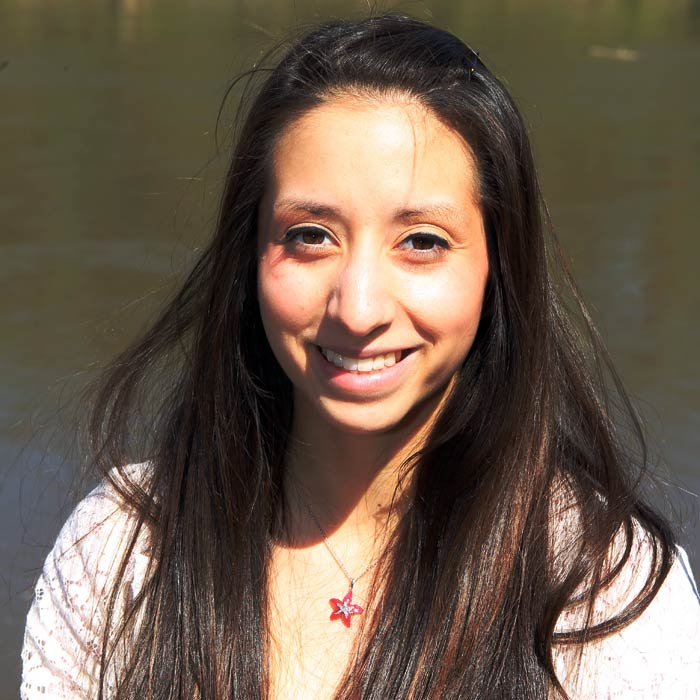UNO fish tank cleaner lands river research grant


Racine Rangel managed to receive a grant that allows her to research at UNO’s Aquatic Toxicology Lab.
Cleaning fish tanks.
Hours and hours of cleaning fish tanks.
That’s what UNO biology major Racine Rangel did when she first joined the school’s Aquatic Toxicology Lab a year and a half ago.
“I knew I had to start at the bottom,” she told the crowd this past April 20 at the official dedication of UNO’s Elkhorn River Research Station, located in Omaha at 245th and Q streets.
“I somehow managed to climb my way up and now have a grant. And I’m really grateful to be one of the first students to be able to have research out here.
“I think that says a huge thing, because I never knew that that would be something I would be able to do as an undergrad at UNO.”
She stood next to the small metal station perched above the river on steel legs – a building designed to look like a rusting old remnant of the river’s past. Inside the 70-foot space are specimen tanks, water-testing tools and enough room for young researchers like Racine to conduct their studies.
She and other UNO students, as well as school kids from around the region, already are using the station to learn about the river.
The goal of the station is to monitor the river’s water quality. It’s a pilot project for what UNO biology Professor Alan Kolok, who first envisioned the station, hopes will be a nationwide investment in similar projects.
Last year in March, more than 150 student and adult volunteers from the state participated in a “What’s In Your Watershed?” test day. They used strips of paper to test the Elkhorn watershed’s atrazine levels. Atrazine is a common herbicide that can enter rivers and lakes through storm runoff. In Omaha, the volunteers collected water at the Elkhorn River station.
They did find atrazine.
David Boocker, dean of UNO’s College of Arts and Sciences, told the crowd he thought Kolok’s idea of building a “data shack” was compelling when he first heard Kolok talk about it.
But what really turned the tide for him, he said, was when Kolok fully explained the function of the station – as not just a research station, but as a teaching station, one that will provide outreach opportunities to the community.
Said the dean: “I believe that what he’s developed here potentially is the model for the kind of research that can be done not just in Nebraska, not just in the United States – but all over the world.”
Land for the station was donated by the family of T.L. Davis in 2005. George Haddix, a 1962 UNO grad, provided the lead gift to the building project.
Racine participated in that “Watershed Day” in 2011, along with some local Boy Scouts. That hands-on experience at the station led her to create a research project – now on its way to being published – on how to efficiently test for atrazine.
“I’ve actually seen this structure when it had nothing in it and was just a building, and I’ve seen it transform into an actual research station.
“I’m really excited about it.
“I didn’t even know I could have a publication of any kind, so to have that opportunity is amazing. I know that the Aquatic Toxicology Lab will be able to utilize this facility for years and years to come.”
The Elkhorn River Research Station exemplifies UNO’s priorities in the Campaign for Nebraska – student-centered learning, academic excellence and community engagement. Research tells us that successful cities of the future will exist where great universities lead the way. Omaha is no exception.
If you’d like to help support the station – as well as UNO students like Racine – please consider giving online or contact the foundation’s Lori Byrne at 800-432-3216.





